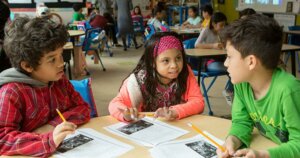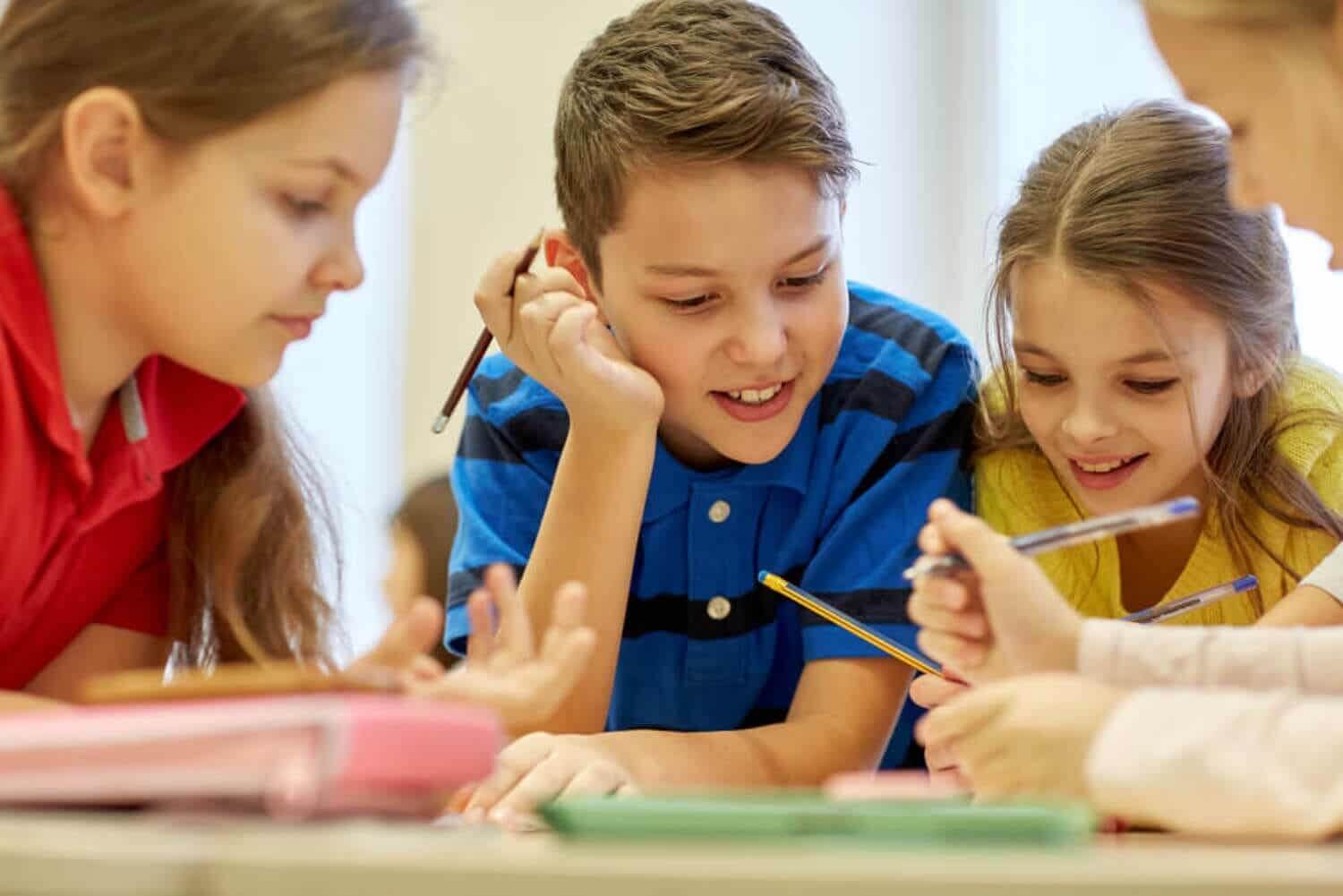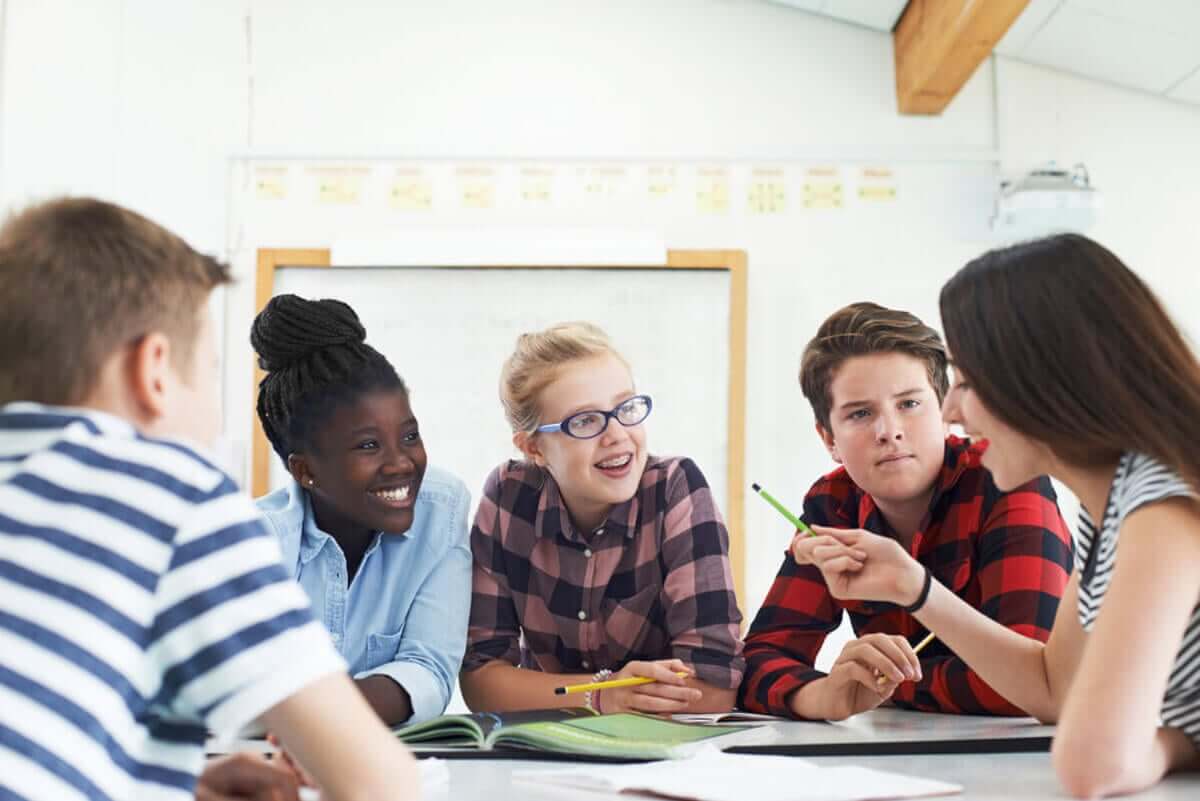Using the Jigsaw Technique to Increase Learning


Written and verified by the pedagogue and trainer María Matilde
The Jigsaw technique is a cooperative learning technique that teachers can use with students of different educational backgrounds. Its purpose is to make the classroom a space for cooperation where students are interdependent when it comes to learning a topic.
What is the Jigsaw technique?
Elliot Aronson is the creator of this technique and he used it with his students at the Universities of Texas and California. It consists of looking at the whole class as a puzzle and each student is a fundamental piece of it.

The Jigsaw technique can be used to help students learn themes and concepts of any subject. The students will be in groups working together to learn. This strategy is beneficial in a number of ways, as it does all of the following:
- Helps students learn concepts effectively
- Promotes collaboration
- Encourages interest in research
- Reduces social and racial conflicts, while promoting integration
- Creates responsibilities and commitments
- Encourages dialogue, listening, and empathy
- Develops autonomy
- Promotes motivation
- Improves decision-making
The role of the teacher
As we mentioned previously, everyone in the class is a key piece of the puzzle when it comes to this learning technique. Therefore, the teacher who’s using this technique is also very important. This is mainly because the educator must hand the control over to their students, as they’re the ones who’ll be in charge of their own learning.
As the students work, the teacher will assume the role of:
- Supervisor
- Mediator
- Guide
- Counselor
- Co-worker
How to use the Jigsaw technique
Let’s take an example from a geography class where students are learning about different rivers. In order to effectively apply and use the jigsaw technique for student learning, the teacher should follow these steps:
- Divide the class into groups (between four and six students).
- In each group, the students will need to choose a leader. However, if the task is more complicated, it may be better if the teacher chooses the leader for each group.
- Next, the teacher will pass out the assignment, and each student in the group will be in charge of one part of the lesson. For example, each member may be in charge of researching the rivers in a specific area of the country.
- After each student has done their research, they’ll need to explain their findings to their groupmates or complete the part of the assignment that corresponds to their particular research.

One of the interesting things about this learning technique is that members of different groups can work together, as long as they’re researching the same topic, like the rivers in the south. Then, they can pool the information they find, share ideas and increase their understanding. After that, the members would be able to share their findings with their original group members.
Therefore, with this learning style, there’s a unique moment that occurs prior to group presentations. It’s kind of like there’s an “experts meeting” where the members of different groups come together with the goal of increasing their overall understanding of the topic. As a result, everyone’s understanding of the subject increases.
Conclusion
This teaching and learning technique is very beneficial because of the skills it helps to develop in students. Due to the constant interaction among students as a way of approaching and learning the content, the main skills the students will build are their social and communicative abilities.
In addition, as we’ve mentioned, every member of the class has a unique job. Both the teacher and the students are fundamental and indispensable pieces in the teaching and learning process.
As you can see, the Jigsaw technique is an excellent strategy for integration and interpersonal cooperation. Also, it’s an effective way to achieve active and meaningful learning.
The Jigsaw technique is a cooperative learning technique that teachers can use with students of different educational backgrounds. Its purpose is to make the classroom a space for cooperation where students are interdependent when it comes to learning a topic.
What is the Jigsaw technique?
Elliot Aronson is the creator of this technique and he used it with his students at the Universities of Texas and California. It consists of looking at the whole class as a puzzle and each student is a fundamental piece of it.

The Jigsaw technique can be used to help students learn themes and concepts of any subject. The students will be in groups working together to learn. This strategy is beneficial in a number of ways, as it does all of the following:
- Helps students learn concepts effectively
- Promotes collaboration
- Encourages interest in research
- Reduces social and racial conflicts, while promoting integration
- Creates responsibilities and commitments
- Encourages dialogue, listening, and empathy
- Develops autonomy
- Promotes motivation
- Improves decision-making
The role of the teacher
As we mentioned previously, everyone in the class is a key piece of the puzzle when it comes to this learning technique. Therefore, the teacher who’s using this technique is also very important. This is mainly because the educator must hand the control over to their students, as they’re the ones who’ll be in charge of their own learning.
As the students work, the teacher will assume the role of:
- Supervisor
- Mediator
- Guide
- Counselor
- Co-worker
How to use the Jigsaw technique
Let’s take an example from a geography class where students are learning about different rivers. In order to effectively apply and use the jigsaw technique for student learning, the teacher should follow these steps:
- Divide the class into groups (between four and six students).
- In each group, the students will need to choose a leader. However, if the task is more complicated, it may be better if the teacher chooses the leader for each group.
- Next, the teacher will pass out the assignment, and each student in the group will be in charge of one part of the lesson. For example, each member may be in charge of researching the rivers in a specific area of the country.
- After each student has done their research, they’ll need to explain their findings to their groupmates or complete the part of the assignment that corresponds to their particular research.

One of the interesting things about this learning technique is that members of different groups can work together, as long as they’re researching the same topic, like the rivers in the south. Then, they can pool the information they find, share ideas and increase their understanding. After that, the members would be able to share their findings with their original group members.
Therefore, with this learning style, there’s a unique moment that occurs prior to group presentations. It’s kind of like there’s an “experts meeting” where the members of different groups come together with the goal of increasing their overall understanding of the topic. As a result, everyone’s understanding of the subject increases.
Conclusion
This teaching and learning technique is very beneficial because of the skills it helps to develop in students. Due to the constant interaction among students as a way of approaching and learning the content, the main skills the students will build are their social and communicative abilities.
In addition, as we’ve mentioned, every member of the class has a unique job. Both the teacher and the students are fundamental and indispensable pieces in the teaching and learning process.
As you can see, the Jigsaw technique is an excellent strategy for integration and interpersonal cooperation. Also, it’s an effective way to achieve active and meaningful learning.
All cited sources were thoroughly reviewed by our team to ensure their quality, reliability, currency, and validity. The bibliography of this article was considered reliable and of academic or scientific accuracy.
- Chung Pinzás, G. Y. (2013). Desarrollo de un Sistema Web para la enseñanza de Casos de Uso empleando la Técnica de Aprendizaje Cooperativo de Rompecabezas. Recuperado de http://tesis.pucp.edu.pe/repositorio/bitstream/handle/20.500.12404/4929/CHUNG_GERARDO_DESARROLLO_SISTEMA_WEB_ENSE%c3%91ANZA_APRENDIZAJE_COOPERATIVO_ROMPECABEZAS.pdf?sequence=1&isAllowed=y
- Gallac Chuquipul, N. (2015). Aplicación del método del rompecabezas para desarrollar la competencia de construcción de la cultura cívica. Recuperado de https://repositorio.upeu.edu.pe/bitstream/handle/UPEU/473/Nerida_Tesis_especialidad_2015.pdf?sequence=1&isAllowed=y
- Díaz Martín, A. (2016). Aprendizaje cooperativo en el aula de tecnología en secundaria:” El rompecabezas”. Recuperado de http://repositorio.ual.es/bitstream/handle/10835/6071/10462_TFM%20CORREGIDO%2019-junio-16firma.pdf?sequence=1
This text is provided for informational purposes only and does not replace consultation with a professional. If in doubt, consult your specialist.








